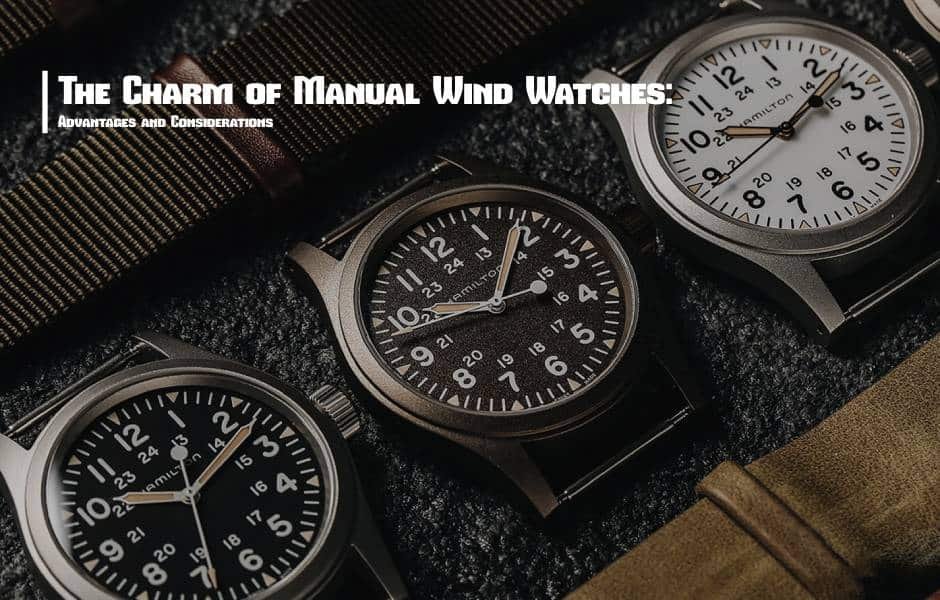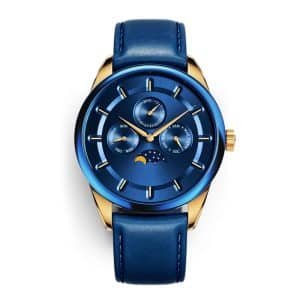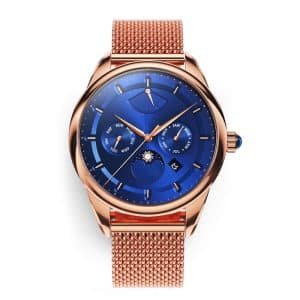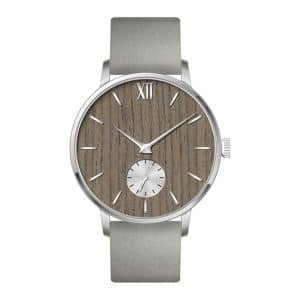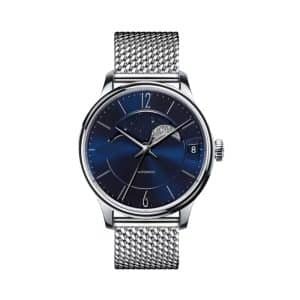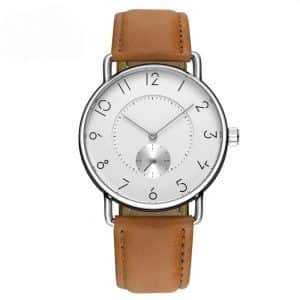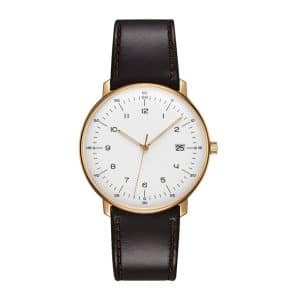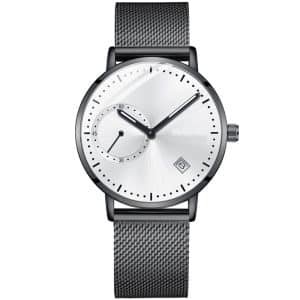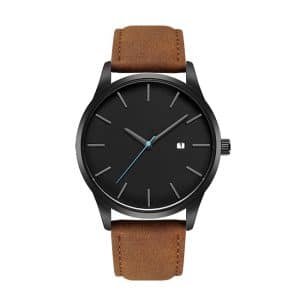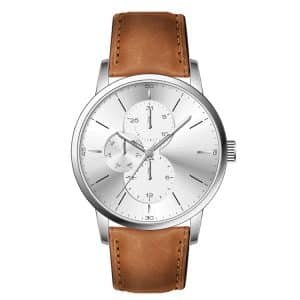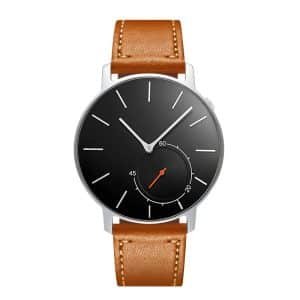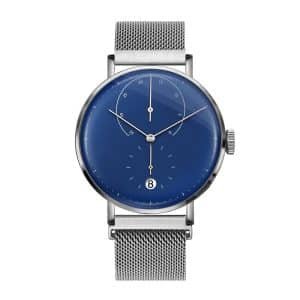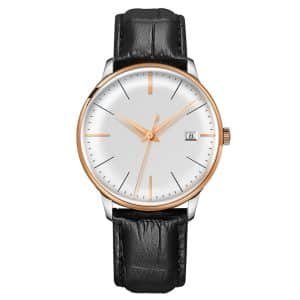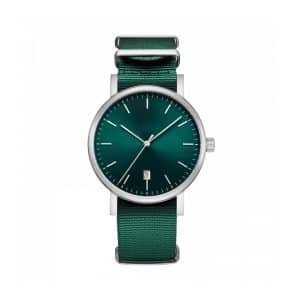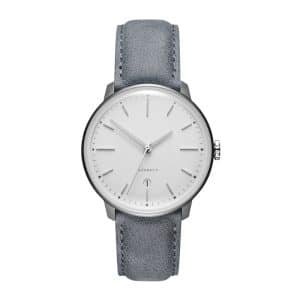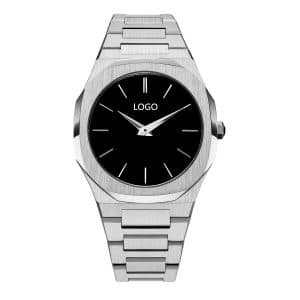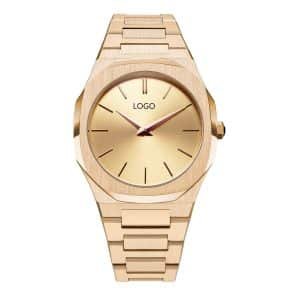Introduction to Mechanical Watch Types
The world of horology is fascinating, filled with intricate mechanisms and timeless designs. When it comes to mechanical watches, two main types dominate the landscape: automatic and manual wind watches. While automatic watches have become increasingly popular in recent years, manual wind watches hold a special place in the hearts of many watch enthusiasts. But what makes these timepieces so appealing? Why would someone choose a watch that requires daily winding over one that winds itself?
In this post, we’ll explore the unique charm of manual wind watches, delving into their advantages and the reasons why they continue to captivate watch lovers around the globe. Whether you’re a seasoned collector or new to the world of mechanical timepieces, understanding the appeal of manual wind watches can open up a new dimension in your appreciation of horological craftsmanship.
From their slimmer profiles to their lower failure rates, manual wind watches offer a range of benefits that set them apart from their automatic counterparts. Join us as we wind our way through the intricacies of these beautiful timepieces and discover why they might be the perfect choice for your next watch purchase.

The Rise of Automatic Watches: A Modern Convenience
In today’s fast-paced world, automatic watches have become the go-to choice for many watch enthusiasts and casual wearers alike. But what’s behind their widespread popularity? Let’s wind back the clock and explore why these self-winding timepieces have taken the horological world by storm.
Convenience at Its Core
The primary appeal of automatic watches lies in their self-winding mechanism. As you move throughout your day, a rotor in the watch spins, winding the mainspring and storing energy. This means you can simply put on your watch and forget about it – no daily winding required. For busy professionals and those who prefer a “set it and forget it” approach to timekeeping, this feature is a game-changer.
Consistent Timekeeping
Because automatic watches are constantly being wound through natural arm movements, they tend to maintain more consistent timekeeping. This continuous operation helps keep the watch’s components well-lubricated and functioning optimally, potentially improving accuracy over time.
A Wide Range of Options
The popularity of automatic watches has led to an explosion of choices in the market. From affordable entry-level pieces to high-end luxury timepieces, there’s an automatic watch for every style and budget. This variety has made automatic watches accessible to a broader audience, further cementing their dominance in the watch world.
Advanced Complications Made Easy
Automatic movements often come paired with various complications like date displays, day-date functions, or even more complex features like moonphase indicators. The self-winding nature of these watches means you don’t have to worry about resetting these functions as often, assuming the watch is worn regularly.
While automatic watches offer undeniable advantages, they’re not the only players in the game. Manual wind watches, with their unique charm and benefits, continue to hold a special place in the hearts of many watch aficionados. In the next section, we’ll explore why some enthusiasts still prefer the hands-on approach of a manual wind timepiece.

The Unique Appeal of Manual Wind Watches: A Return to Tradition
While automatic watches dominate the market, manual wind watches continue to hold a special place in the world of horology. But what draws watch enthusiasts to these timepieces that require daily attention? Let’s explore the unique charm of manual wind watches and why they remain a beloved choice for many collectors and aficionados.
A Personal Connection
One of the most significant appeals of a manual wind watch is the intimate connection it fosters between the wearer and the timepiece. The daily ritual of winding your watch becomes a moment of mindfulness, a brief pause in your day to appreciate the craftsmanship on your wrist. This hands-on interaction allows you to feel the mechanics of the watch, creating a deeper appreciation for its inner workings.
Simplicity in Design
Manual wind watches often boast a simpler, more streamlined design compared to their automatic counterparts. Without the need for a rotor to enable self-winding, these watches can be slimmer and more elegant. This simplicity extends to the movement itself, with fewer components potentially leading to increased reliability and easier maintenance.
A Window to the Past
For many, a manual wind watch represents a connection to the rich history of watchmaking. Before the invention of automatic movements, all mechanical watches required manual winding. By choosing a manual wind watch, wearers can experience timekeeping in much the same way as generations before them, carrying on a horological tradition.
The Joy of Winding
While some may see daily winding as a chore, many manual wind watch enthusiasts view it as a pleasure. The tactile sensation of turning the crown, feeling the resistance of the mainspring, and knowing you’re providing the energy to power your timepiece can be deeply satisfying. It’s a daily reminder of the mechanical marvel adorning your wrist.
A Purist’s Choice
Many watch purists appreciate manual wind watches for their perceived “purity” in mechanical watchmaking. Without the added complexity of an automatic winding system, these watches represent horology in its most fundamental form. This simplicity is often seen as a celebration of watchmaking’s core principles.
As we’ve seen, the appeal of manual wind watches goes far beyond mere timekeeping. These timepieces offer a unique experience, blending tradition, craftsmanship, and personal interaction. In the next section, we’ll delve deeper into the specific advantages that manual wind watches offer over their automatic counterparts.

The Advantages of Manual Wind Watches: More Than Meets the Eye
While manual wind watches may seem like a relic of the past to some, they offer several distinct advantages over their automatic counterparts. Let’s explore these benefits in detail and understand why many watch enthusiasts still opt for these classic timepieces.
- Simpler Mechanism, Lower Failure Rates
One of the primary advantages of manual wind watches lies in their simplicity. With fewer components than automatic watches, these timepieces have a reduced risk of mechanical failure. The absence of a rotor and its associated parts means there are simply fewer things that can go wrong. This simplicity often translates to:
- Increased reliability over time
- Potentially lower maintenance costs
- Longer intervals between servicing
- Slimmer Profile and Aesthetic Appeal
Without the need for an automatic winding mechanism, manual wind watches can be designed with a slimmer profile. This sleek design offers several benefits:
- A more elegant appearance, especially under shirt cuffs
- Lighter weight for increased comfort
- Versatility in style, suitable for both formal and casual wear
- Enhanced Movement Visibility
Many manual wind watches feature transparent case backs, allowing wearers to admire the intricacy of the movement. Without a rotor obscuring the view, you can fully appreciate the craftsmanship of the watch’s inner workings. This feature is particularly appealing for watch enthusiasts who value the artistry of horology.
- Cost Considerations
While not universally true, manual wind watches can sometimes be more affordable than their automatic counterparts. The simpler mechanism may result in:
- Lower manufacturing costs
- Reduced prices for entry-level mechanical watches
- More accessible options for those new to mechanical timepieces
- Improved Power Reserve Management
With a manual wind watch, you have direct control over the power reserve. This allows for:
- Better awareness of your watch’s power status
- The ability to fully wind the watch before extended periods of non-use
- A deeper understanding of your watch’s performance over time
- A Quieter Timepiece
Without the sound of a rotor spinning, manual wind watches tend to be quieter than automatic watches. This can be particularly appealing for those who are sensitive to noise or appreciate a silent timepiece.
While these advantages make manual wind watches an attractive option for many, it’s important to note that they do require more attention than automatic watches. The daily winding routine may not suit everyone’s lifestyle. However, for those who appreciate the craftsmanship and tradition of mechanical watches, these benefits often outweigh the minor inconvenience of manual winding.

Design Characteristics of Manual Wind Watches: Simplicity Meets Sophistication
The unique mechanism of manual wind watches often influences their design, resulting in timepieces that are both visually striking and functionally elegant. Let’s explore the distinctive design characteristics that set manual wind watches apart from their automatic counterparts.
- Cleaner Dial Designs
Manual wind watches often feature simpler, more minimalist dial designs. This design choice is influenced by several factors:
- Without the need for a date window (common in automatic watches), the dial can remain uncluttered
- The focus is often on pure timekeeping, with just hour, minute, and sometimes second hands
- This simplicity allows for greater emphasis on dial textures, colors, and finishing techniques
- Thinner Case Profiles
As mentioned earlier, the absence of an automatic winding mechanism allows for slimmer watch cases. This characteristic influences the overall design in several ways:
- It enables a more vintage-inspired aesthetic, reminiscent of classic timepieces
- The sleeker profile often results in a more elegant, dress watch appearance
- It allows for greater versatility in styling, easily sliding under shirt cuffs
- Exhibition Case Backs
Many manual wind watches feature transparent case backs, showcasing the movement within:
- This design choice celebrates the craftsmanship of the watch’s inner workings
- It allows the wearer to observe the balance wheel and other components in action
- The lack of a rotor provides an unobstructed view of the entire movement
- Crown Design
The crown on a manual wind watch often receives special attention in the design process:
- It may be larger or more prominently positioned for easier daily winding
- Some designs feature oversized or onion-shaped crowns, adding a distinctive touch
- The crown’s design often complements the overall aesthetic of the watch
- Emphasis on Movement Finishing
With the movement often on display, manual wind watches frequently feature higher levels of movement decoration:
- Techniques like Geneva stripes, perlage, and blued screws are commonly employed
- This focus on movement aesthetics adds to the overall value proposition of the watch
- It provides an additional point of interest for watch enthusiasts and collectors
- Limited Complications
While not a universal rule, manual wind watches tend to have fewer complications compared to automatic watches:
- This aligns with the philosophy of simplicity and pure timekeeping
- When complications are present, they’re often carefully chosen to complement the overall design
- Popular complications in manual wind watches include small seconds subdials or power reserve indicators
- Vintage-Inspired Designs
Many manual wind watches draw inspiration from historical timepieces:
- This often results in design elements like domed crystals, applied indices, or sector dials
- The use of traditional watchmaking techniques and designs appeals to those who appreciate horological heritage
These design characteristics contribute to the unique appeal of manual wind watches. They often result in timepieces that are not just instruments for telling time, but also objects of art and craftsmanship.
Practical Considerations for Manual Wind Watch Owners: Mastering the Art of Timekeeping
Owning a manual wind watch can be a rewarding experience, but it does come with its own set of responsibilities and considerations. Whether you’re a seasoned collector or considering your first manual wind timepiece, here are some practical aspects to keep in mind:
- The Importance of Regular Winding
The most crucial aspect of owning a manual wind watch is, of course, the winding itself:
- Establish a daily winding routine, preferably at the same time each day
- Wind your watch fully to ensure optimal timekeeping and power reserve
- Avoid overwinding by stopping when you feel resistance in the crown
- Understanding Power Reserve
Familiarize yourself with your watch’s power reserve:
- Most manual wind watches have a power reserve between 40-72 hours
- Some high-end models may offer longer power reserves of up to a week
- Know your watch’s limits to prevent it from stopping unexpectedly
- Winding Technique
Proper winding technique can prolong the life of your watch:
- Wind the watch off your wrist to avoid putting lateral stress on the winding stem
- Turn the crown slowly and steadily, about 20-30 times for a full wind
- If your watch has stopped, give it a few winds before setting the time
- Time Setting Best Practices
When setting the time on your manual wind watch:
- Always set the time moving forward, not backward, to protect the movement
- If your watch has a date function, avoid changing the date between 9 PM and 3 AM
- For increased accuracy, set the time a minute or two ahead, then wait for the correct time to start the watch
- Storage Considerations
When not wearing your manual wind watch:
- Consider a watch winder if you have multiple watches in rotation
- Store the watch flat or with the crown up to minimize positional variance
- If storing long-term, wind it occasionally to keep the lubricants distributed
- Balancing Convenience and Enthusiasm
While daily winding is necessary, it’s important to find a balance:
- Choose a watch with a longer power reserve if you prefer less frequent winding
- Consider an automatic watch for daily wear if winding becomes a chore
- Use the winding process as a moment of mindfulness and appreciation for your timepiece
- Servicing and Maintenance
Regular maintenance is key to keeping your manual wind watch in top condition:
- Have your watch serviced every 3-5 years, depending on the manufacturer’s recommendations
- Keep the watch away from strong magnetic fields to maintain accuracy
- Be mindful of water resistance ratings and treat your watch accordingly
- Traveling with a Manual Wind Watch
When traveling with your manual wind watch:
- Wind it fully before departure if you’ll be crossing time zones
- Consider bringing a travel clock as a backup if you’re concerned about accuracy
- Be prepared to adjust the time more frequently during your trip
By keeping these practical considerations in mind, you can ensure that your manual wind watch remains a reliable and enjoyable companion.
Who Should Consider a Manual Wind Watch: Finding Your Perfect Timepiece
Manual wind watches offer a unique experience in the world of horology. While they may not be for everyone, certain individuals will find these timepieces particularly appealing. Let’s explore who might be best suited for a manual wind watch and why it could be the perfect choice for your next timepiece.
- The Watch Enthusiast
For true watch aficionados, a manual wind watch offers:
- A deeper connection to the history and tradition of watchmaking
- The opportunity to interact daily with the watch’s mechanics
- A chance to appreciate the craftsmanship of simpler, often more elegant movements
- The Mindful Individual
Those who value mindfulness and intentional living may find that a manual wind watch:
- Provides a daily ritual that encourages a moment of pause and reflection
- Offers a tactile, analog experience in an increasingly digital world
- Serves as a reminder to slow down and appreciate the passage of time
- The Minimalist
For those who appreciate simplicity and minimalism, manual wind watches often offer:
- Cleaner dial designs with fewer complications
- Slimmer case profiles that sit comfortably under a shirt cuff
- A focus on essential timekeeping without extraneous features
- The Vintage Lover
Collectors and enthusiasts of vintage timepieces might prefer manual wind watches because:
- They’re more historically accurate to many classic watch designs
- They offer a nostalgic experience of traditional watchmaking
- Many modern manual wind watches are inspired by vintage aesthetics
- The Occasional Watch Wearer
For those who don’t wear a watch daily, a manual wind watch can be ideal:
- It doesn’t require constant motion to keep running, unlike automatic watches
- The ritual of winding can be enjoyable when the watch is worn for special occasions
- It’s easy to set and wind before each wear, ensuring accuracy
- The Mechanical Purist
Watch collectors who appreciate mechanical purity might choose manual wind watches because:
- They represent watchmaking in its most fundamental form
- The lack of a rotor allows for unobstructed views of the movement
- They often feature higher levels of movement finishing and decoration
- The Value Seeker
For those looking for an entry point into mechanical watches, manual wind options can offer:
- More affordable prices for similar quality movements compared to automatics
- A chance to own a mechanical watch without the premium often associated with automatic movements
- Potentially lower service costs due to simpler mechanisms
- The Dress Watch Enthusiast
Those who appreciate formal timepieces might gravitate towards manual wind watches for their:
- Typically slimmer profiles, ideal for dress watches
- Often more understated and elegant designs
- Historical association with classic dress watch styles
While manual wind watches have broad appeal, they may not be suitable for everyone. Those who prefer a “set it and forget it” approach to their timepieces or who have busy lifestyles that make daily winding challenging might be better served by automatic or quartz watches.
Ultimately, the choice between a manual wind watch and other types comes down to personal preference, lifestyle, and the relationship you want to have with your timepiece. For those who appreciate the art of watchmaking, enjoy a hands-on approach to their possessions, and value the connection between wearer and watch, a manual wind timepiece can be a perfect choice.
Conclusion: The Timeless Charm of Manual Wind Watches
As we’ve explored, manual wind watches offer a unique blend of tradition, craftsmanship, and personal connection. Their simpler mechanisms, elegant designs, and the ritual of daily winding continue to captivate watch enthusiasts worldwide.
These timepieces stand out with their:
- Slimmer profiles
- Enhanced movement visibility
- Potential for lower maintenance costs
- Deep connection to horological heritage
While not for everyone, manual wind watches appeal to those who appreciate a more hands-on approach to timekeeping. They serve as a reminder of the art of watchmaking in an increasingly digital world.
Whether you’re a seasoned collector or new to mechanical watches, consider the charm of a manual wind timepiece for your next purchase. It might just be the perfect blend of tradition and craftsmanship you’ve been looking for.
Related Posts
- The Ultimate Guide To Watch Movements: Types, Mechanisms, And Brands
- The Difference Between Automatic And Hand-Wound Movements
- Timeless Beauty: Unveiling The Anatomy Of A Watch
- China Watch Factory – Custom Watch Manufacturing Services
- The Anatomy Of A Watch – Understanding The Different Parts
- ODM Vs OEM Watch: Understanding The Difference In Watch Manufacturing Services
- How To Find The Best Watch Manufacturing Company For Your Needs
- Discover High-Quality Watches From A Leading Chinese Watch Manufacturer
- Guide: How To Establish Your Own Watch Brand In Simple Steps

